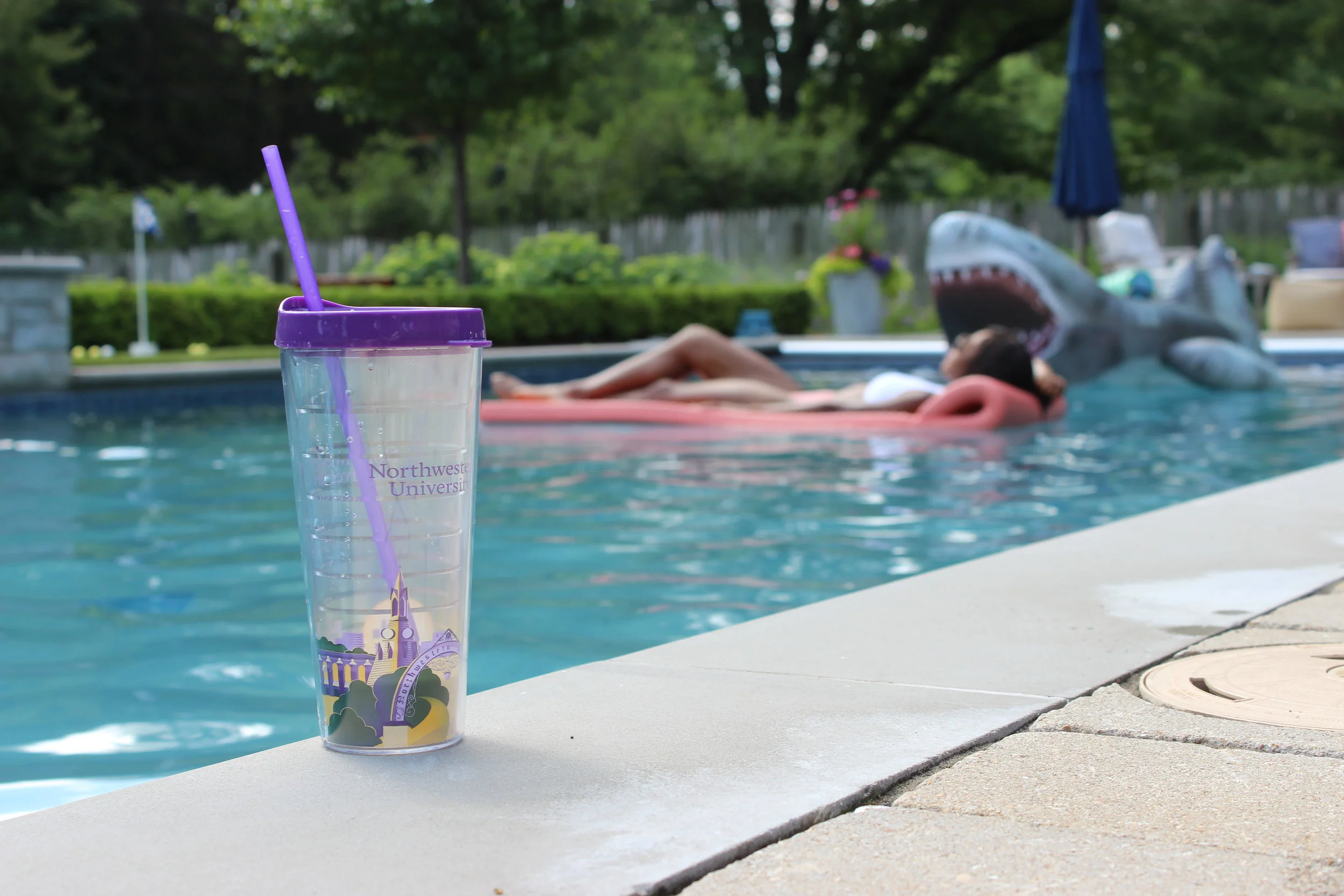Creative Brief
Northwestern University’s July incentive campaign is the last large campaign of each fiscal year. Northwestern uses this campaign to incentivize alumni (particularly alumni who have not yet given in the current fiscal year) to make their annual gift. In return, they receive a promotional item, internally termed as an incentive. Each year a new incentive is released as part of a limited-run campaign across email, web, and social. In 2018, the client team chose a tumbler.
Deliverables
Custom illustration for product
Various emails related to campaign
Landing page
Content strategy & execution for Social
Photography
The Team
Creative Direction: Mark Meyer
Art Direction: Samantha Kachel
Copywriter: Client
Photographer/Videographer: Tristan Riddell
Client Management: Lydia Ballenger
Social Management/Support: Emmet Sullivan
My role: Developing the illustration and campaign artwork in collaboration with the design director (CD). I developed a content strategy and moodboard, along with a shot list for the photographer. Emmet scouted the locations for the shoot and then we both supported the shoot day of. Most of the campaign was built with a shoestring budget.
Once the client select the the incentive we’d be promoting, the team got together to discuss creative direction and any constraints. For the most part this would follower our usual summer incentive campaign. Takeaways: this incentive should communicate Northwestern, summer, and a general fun and engaging atmosphere.
Challenge: Due to the timeline of incentives, we rarely receive the product before the campaign can go live. In this case, our deadlines for email production meant photography would need to be mocked up by the tumbler vendor.
The Process
The mood board was presented during a meeting with the client to chat more in depth about social content and strategy. After getting client feedback from the mood board, the team prepared a more formal social strategy and a photoshoot of the tumbler.
Simultaneously, I started designing concepts for the tumbler. Once a direction was selected, other campaign deliverables went into production as well. I put together a broadside packet, showcasing a couple different comps. After getting internal feedback, my team met with the client to present the comps.
The options presented meet the deliverable criteria, but vary most in the belly banner designs:
Option 1 is nearly a straight pick-up. This option is the most expected design, as it doesn’t vary much from previous years. However, some variations are brought in to maintain consistency with the incentive design.
Option 2 provides some variations to the usual design as means of better communicating the illustration on the tumbler.
See the PDF of the comps presented here.
You may notice there is no landing page banner in the PDF. During the meeting we also presented the idea of redesigning the landing page, to better showcase the incentive and be more in line with current web design. (above)
Initial feedback was good, but other stakeholders also needed to weigh in. As feedback from various stakeholders came in, a few tweaks were made. The client chose the second option of belly banners. Unfortunately, the client also chose to return to their usual landing page design here, rather than the version presented with the broadside. In regards to social content, the photoshoot produced several photos of the tumbler in summer themed environments. The client selected several photos, below is a team favorite that did not make the final cut.
The campaign launched over social first. In the first 48 hours over 50% of the giving goals were met. However, after emails deployed, two unforeseeable situations came into play, and a decision was made to end the campaign early. For this reason, the total goal was not made, and plans to reissue the campaign at a later date were made. Based on the trajectory of the campaign, had it gone to completion the goals would’ve likely been achieved.
This was a project where I truly saw my creative direction come to life from beginning to end. I simultaneously had to look at the project from a wide and narrow lens. However, I also learned how important a constantly collaborative team is, especially for a project with many moving parts. In the end, I still see opportunity for growth in this project. Because it is an annual project, we can study the analytics of the campaign and use that data to inform upon the design in the future.



